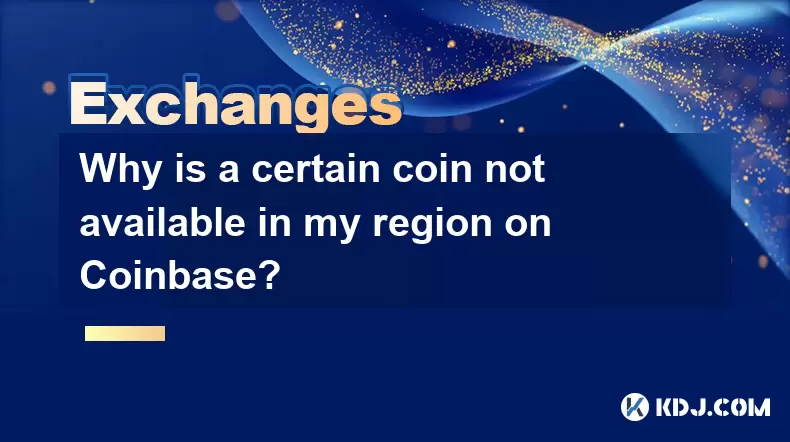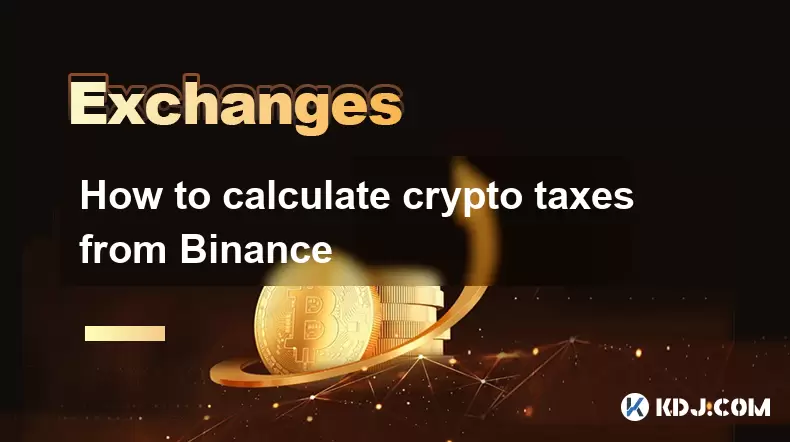-
 Bitcoin
Bitcoin $117500
2.15% -
 Ethereum
Ethereum $3911
6.19% -
 XRP
XRP $3.316
10.79% -
 Tether USDt
Tether USDt $1.000
0.01% -
 BNB
BNB $787.2
2.24% -
 Solana
Solana $175.2
4.15% -
 USDC
USDC $0.9999
0.00% -
 Dogecoin
Dogecoin $0.2225
8.40% -
 TRON
TRON $0.3383
0.28% -
 Cardano
Cardano $0.7868
6.02% -
 Stellar
Stellar $0.4382
9.34% -
 Hyperliquid
Hyperliquid $40.92
7.56% -
 Sui
Sui $3.764
7.63% -
 Chainlink
Chainlink $18.48
10.66% -
 Bitcoin Cash
Bitcoin Cash $582.1
1.88% -
 Hedera
Hedera $0.2601
6.30% -
 Avalanche
Avalanche $23.33
4.94% -
 Ethena USDe
Ethena USDe $1.001
0.02% -
 Litecoin
Litecoin $122.3
2.04% -
 UNUS SED LEO
UNUS SED LEO $8.969
-0.27% -
 Toncoin
Toncoin $3.339
0.86% -
 Shiba Inu
Shiba Inu $0.00001287
4.30% -
 Uniswap
Uniswap $10.43
7.38% -
 Polkadot
Polkadot $3.861
5.08% -
 Dai
Dai $1.000
0.02% -
 Bitget Token
Bitget Token $4.513
3.41% -
 Monero
Monero $267.7
-6.18% -
 Cronos
Cronos $0.1499
4.14% -
 Pepe
Pepe $0.00001110
5.15% -
 Aave
Aave $284.9
8.28%
Why is a certain coin not available in my region on Coinbase?
Coinbase restricts certain cryptocurrencies based on regional regulations, compliance requirements, and licensing limitations to ensure legal operation in each jurisdiction.
Jul 10, 2025 at 08:56 pm

Understanding Regional Restrictions on Coinbase
If you're wondering why a certain coin is not available in your region on Coinbase, the answer lies in the complex interplay of regulatory compliance, legal restrictions, and platform-specific policies. Cryptocurrency exchanges like Coinbase must adhere to local laws and financial regulations that vary significantly from one country to another.
Each jurisdiction has its own stance on digital assets — some embrace them fully, while others impose strict limitations or outright bans. As a result, Coinbase filters which cryptocurrencies can be traded based on the user's geographic location to ensure it remains compliant with local legislation.
How Location Affects Cryptocurrency Availability
When you log into your Coinbase account, the platform automatically detects your location using your IP address and registered account details. Based on this information, it restricts access to certain coins that are not approved for trading in your region.
For example:
- In the United States, some tokens may be unavailable due to SEC (Securities and Exchange Commission) classifications
- In countries like Japan or South Korea, local regulators have specific licensing requirements that limit the types of crypto assets offered
- In regions with strict capital controls or anti-crypto policies, Coinbase may not offer any services at all
This means that even if a particular cryptocurrency is listed globally on Coinbase, you may not see it in your app or website interface if it’s restricted in your area.
Regulatory Compliance and Licensing Requirements
One of the core reasons for regional unavailability is regulatory compliance. Unlike traditional financial products, cryptocurrencies exist in a gray area in many jurisdictions, making it essential for exchanges to tread carefully.
To operate legally in a given region, Coinbase must obtain the necessary licenses and approvals, which often involve lengthy processes and stringent conditions. If a particular token doesn’t meet these standards, it will be excluded from the platform in that region until compliance is achieved.
Additionally:
- Some countries require exchanges to register each new cryptocurrency individually before listing
- Others impose restrictions on specific types of tokens, such as utility tokens or security tokens
- Regulatory bodies may also issue temporary or permanent bans on certain crypto assets, forcing platforms like Coinbase to delist them
Technical and Operational Constraints
Beyond regulation, technical and operational challenges also influence availability. Not every cryptocurrency can be supported across all regions due to differences in infrastructure, banking relationships, and liquidity.
For instance:
- Fiat currency pairs may not be available in certain regions, limiting the ability to trade specific coins
- Local payment methods might not integrate smoothly, reducing support for certain assets
- Liquidity providers may not operate in your region, affecting the exchange’s ability to offer stable trading pairs
These factors contribute to why a certain coin may appear on Coinbase in one country but not in another, even when both locations allow crypto trading.
Steps to Verify Your Region and Account Settings
If you suspect that your region is causing certain coins to be hidden, you can verify your settings by following these steps:
- Log into your Coinbase account
- Navigate to the Settings section
- Check your account profile and location information
- Ensure your country and phone number are up to date
- Confirm that your KYC (Know Your Customer) verification is complete
Sometimes, incorrect or incomplete verification can lead to limited access, so double-checking your personal details is crucial.
If everything appears correct and you still don’t see the desired coin, it’s likely due to regional restrictions rather than an error in your account setup.
Frequently Asked Questions
Q: Can I use a VPN to access unavailable coins on Coinbase?
Using a VPN to bypass regional restrictions on Coinbase violates their Terms of Service. If detected, your account may face suspension or termination. It’s best to comply with local laws and wait for official support in your region.
Q: Will Coinbase ever list more coins in my region?
That depends on regulatory developments and licensing approvals. Coinbase regularly evaluates new assets and expands offerings as permitted by law. However, there’s no guaranteed timeline for when or if a specific coin will become available.
Q: Are there alternative platforms where the coin might be available?
Yes, many other exchanges operate under different regulatory frameworks and may offer the coin you’re looking for. Always conduct thorough research and ensure the platform is reputable and secure before transferring funds.
Q: How does Coinbase decide which coins to list or delist?
Coinbase uses a comprehensive evaluation process that includes legal compliance, technical feasibility, market demand, and community interest. Coins that fail to meet evolving regulatory or operational standards may be removed from the platform.
Disclaimer:info@kdj.com
The information provided is not trading advice. kdj.com does not assume any responsibility for any investments made based on the information provided in this article. Cryptocurrencies are highly volatile and it is highly recommended that you invest with caution after thorough research!
If you believe that the content used on this website infringes your copyright, please contact us immediately (info@kdj.com) and we will delete it promptly.
- SNEK, Cardano, and the Contributor's Conundrum: A Meme Coin's Fight for Recognition
- 2025-08-08 16:30:12
- Toshi Crypto's Wild Ride: Rally, Demand Slump, and What's Next
- 2025-08-08 16:30:12
- Ethereum, Staking Yields, and DeFi Exposure: A New Era for Investors?
- 2025-08-08 15:10:12
- Unilabs Pumps MIA, Binance Coin Bouncing Back, and Ethereum's Bearish Blues
- 2025-08-08 15:10:12
- Ethereum's Wyckoff Markup and Market Rotation: A New Era?
- 2025-08-08 15:30:12
- Ethereum, Vitalik Buterin, and the Overleveraged Game: A Balancing Act
- 2025-08-08 15:30:12
Related knowledge

How to use margin trading on Poloniex
Aug 08,2025 at 09:50am
Understanding Margin Trading on Poloniex

How to use advanced trading on Gemini
Aug 08,2025 at 04:07am
Understanding Advanced Trading on GeminiAdvanced trading on Gemini refers to a suite of tools and order types designed for experienced traders who wan...

How to deposit USD on Bitstamp
Aug 07,2025 at 05:18pm
Understanding Bitstamp and USD DepositsBitstamp is one of the longest-standing cryptocurrency exchanges in the industry, offering users the ability to...

How to use the Kraken Pro interface
Aug 08,2025 at 09:57am
Understanding the Kraken Pro Interface LayoutThe Kraken Pro interface is designed for both novice and experienced traders seeking a streamlined experi...

How to find my transaction ID on Gemini
Aug 08,2025 at 12:50am
Understanding the Transaction ID in Cryptocurrency ExchangesA transaction ID (TXID) is a unique alphanumeric string that identifies a specific transfe...

How to calculate crypto taxes from Binance
Aug 08,2025 at 07:56am
Understanding Cryptocurrency Taxation on BinanceCalculating crypto taxes from Binance requires a clear understanding of how tax authorities classify d...

How to use margin trading on Poloniex
Aug 08,2025 at 09:50am
Understanding Margin Trading on Poloniex

How to use advanced trading on Gemini
Aug 08,2025 at 04:07am
Understanding Advanced Trading on GeminiAdvanced trading on Gemini refers to a suite of tools and order types designed for experienced traders who wan...

How to deposit USD on Bitstamp
Aug 07,2025 at 05:18pm
Understanding Bitstamp and USD DepositsBitstamp is one of the longest-standing cryptocurrency exchanges in the industry, offering users the ability to...

How to use the Kraken Pro interface
Aug 08,2025 at 09:57am
Understanding the Kraken Pro Interface LayoutThe Kraken Pro interface is designed for both novice and experienced traders seeking a streamlined experi...

How to find my transaction ID on Gemini
Aug 08,2025 at 12:50am
Understanding the Transaction ID in Cryptocurrency ExchangesA transaction ID (TXID) is a unique alphanumeric string that identifies a specific transfe...

How to calculate crypto taxes from Binance
Aug 08,2025 at 07:56am
Understanding Cryptocurrency Taxation on BinanceCalculating crypto taxes from Binance requires a clear understanding of how tax authorities classify d...
See all articles

























































































